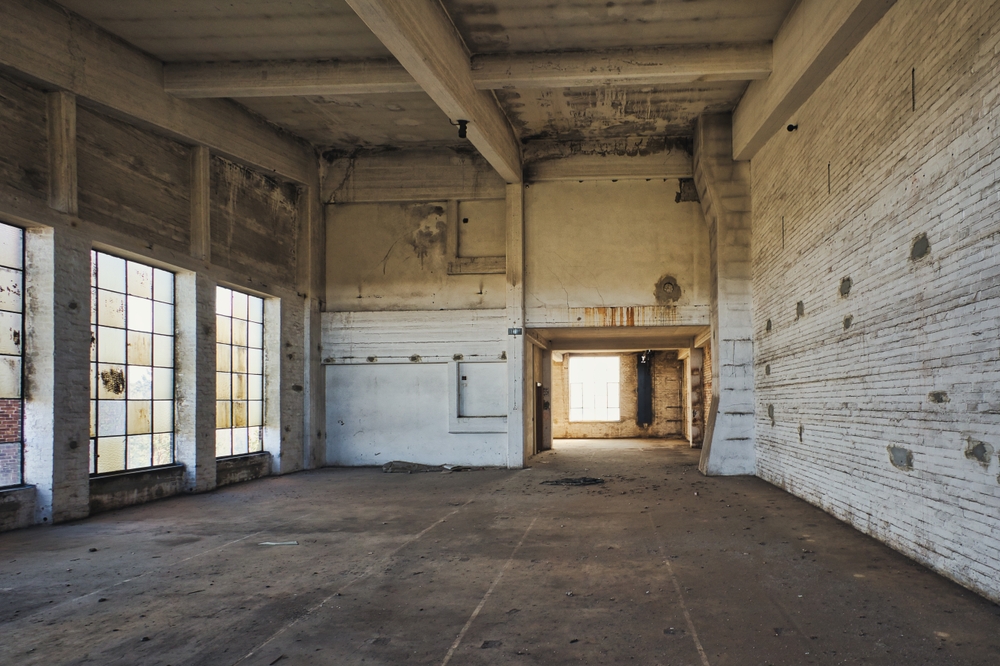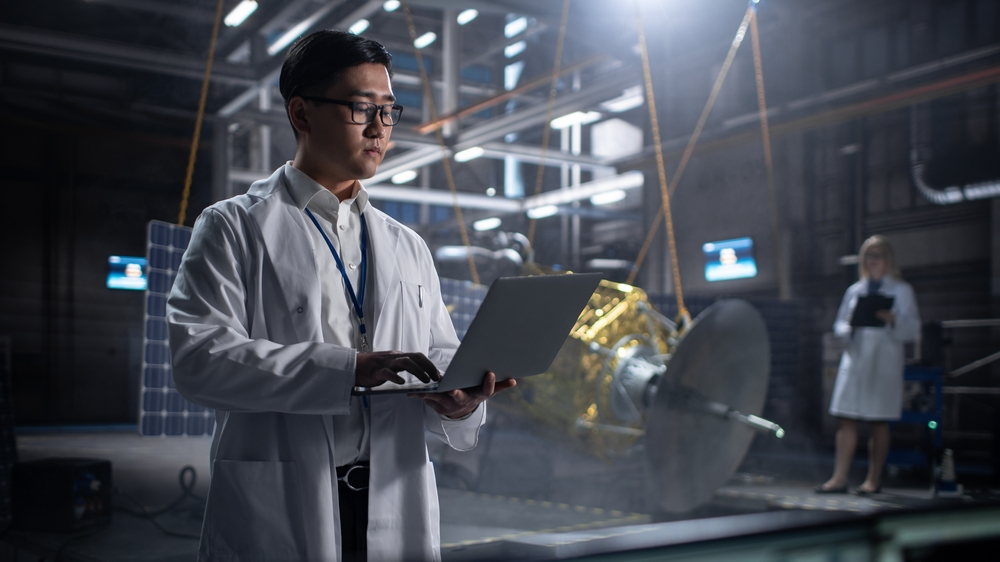Your cart is currently empty!
China has entered the era of dark factory its fully automated with no workers and no lights

China has entered a bold new chapter in manufacturing, one that reads like a science fiction novel but is already a reality. The country has begun operating “dark factories,” fully automated facilities where robots and AI systems handle every aspect of production without a single human on the floor. These plants are literally dark because they don’t need lights—machines don’t require illumination, heating, or ventilation in the same way humans do. Instead, they function in optimized environments designed exclusively for efficiency and precision. The shift is more than just a technological experiment; it’s a glimpse into the future of industry and how nations may compete in an era where human labor is no longer central to production.
This transformation has far-reaching implications that go beyond the walls of the factories themselves. On one side, dark factories symbolize progress: streamlined operations, lower costs, reduced energy demands, and around-the-clock productivity. On the other, they raise pressing questions about the future of work, the identity and livelihood of millions of workers, and the broader social and environmental consequences of unchecked automation. As China takes the lead in this arena, the rest of the world is left to reckon with what this means for global economies, sustainability, and the fundamental human role in industry.

What Exactly Is a Dark Factory?
A dark factory is a facility where robots and machines are responsible for every stage of production, eliminating the need for human workers on site. With no humans present, there’s no requirement for lighting, air conditioning, or break rooms, which dramatically reduces overhead costs. According to Texspace Today, China has already built and launched several such facilities, moving the concept from theory into practice. What was once an experimental vision is now a functioning part of the country’s manufacturing ecosystem, signaling a potential turning point for the entire industry.
Robots in these factories work continuously without the limits of human endurance. They don’t need rest, food, or wages, and they can maintain extreme precision on repetitive tasks. This creates the potential for near-zero error production, something that traditional labor systems can never fully guarantee. The advantages are particularly appealing for industries that demand high levels of accuracy, such as electronics or automotive manufacturing. By designing environments optimized only for machines, companies can reach new heights of output without the friction of human needs.
Yet, while the concept seems highly efficient, it also brings complexity. These factories require advanced systems of artificial intelligence and robotics engineering, which in themselves demand significant investment and skilled oversight. Even though the shop floor may be empty of workers, there’s a sophisticated ecosystem of designers, engineers, and programmers behind the scenes. This creates a paradox: human labor doesn’t vanish entirely, but it shifts to new, specialized domains that are far less accessible to the general workforce.

The Promise of Efficiency and Innovation
For corporations and governments, the most attractive feature of dark factories is the efficiency they promise. Production can continue without interruption, pausing only for machine maintenance. Energy savings are substantial, as there’s no need to light or heat spaces for people. The streamlined nature of this environment creates a cost advantage that may prove irresistible for businesses looking to stay competitive in global markets. When viewed from a purely financial perspective, the case for automation is strong.
China’s rapid adoption of robotics highlights its determination to lead this industrial wave. According to the International Federation of Robotics, China installed almost 290,000 new industrial robots in 2021, more than any other country by a significant margin. This surge isn’t accidental; it’s part of a deliberate national strategy to dominate the future of manufacturing. By embedding robotics and AI deeply into production, China aims to reduce reliance on human labor, accelerate growth, and set global benchmarks for efficiency.
The innovation also extends to how these factories may eventually integrate with other technologies. Imagine supply chains where raw materials are delivered autonomously, processed entirely by machines, and shipped out without a human hand involved. It’s a vision of seamless productivity, where entire systems of production and distribution operate with minimal human oversight. While this level of automation may still be years away, dark factories represent a critical step toward that future.

The Human Cost: Jobs and Identity
The most immediate concern raised by dark factories is their impact on jobs. Manufacturing has historically been the backbone of employment in China, providing work for millions and contributing nearly 30% of the nation’s GDP. If factories eliminate human roles at scale, the social and economic fallout could be enormous. Large sections of the workforce may find themselves displaced, with limited opportunities to transition into the specialized fields required to sustain these new systems.
Beyond the economics lies an even deeper issue: the role of work in human life. Employment is not only a source of income; it is tied to personal identity, community belonging, and social purpose. For generations, factory work has offered people stability and dignity. What happens when that foundation disappears? The erosion of these anchors could lead to increased inequality, social unrest, and a sense of cultural dislocation for those left behind.
Adapting to such a shift will require extensive investment in retraining programs, educational reform, and social safety nets. But retraining alone cannot solve every issue. The specialized roles of robotics engineers and AI programmers may be far out of reach for many displaced workers, particularly older generations or those without advanced education. Without careful planning, societies risk creating a permanent divide between those who benefit from automation and those left excluded.
Lessons From Other Transitions
History offers lessons on how societies respond to disruptive technologies. The steam engine replaced vast amounts of manual labor, the computer automated office work, and the internet transformed global commerce. Each time, new industries arose to replace old ones, though the transition was rarely smooth or evenly distributed. Dark factories, however, represent an acceleration of this process, potentially eliminating whole sectors of human labor in a single sweep.
Unlike previous shifts, where new opportunities were relatively accessible, the opportunities created by dark factories are far narrower. Highly specialized technical fields will grow, but they cannot absorb the millions of people potentially displaced. This imbalance makes the transition more daunting. Governments and industries will need to be proactive in building pathways that allow workers to transition with dignity, or else face severe social consequences.
The broader question is whether societies are ready to confront such rapid change. Past transitions unfolded over decades, giving people time to adapt. Automation in the form of dark factories is emerging far more quickly, meaning adjustment will need to be more deliberate and carefully managed. Failure to do so risks creating a new era of inequality and instability.
Reflections on Sustainability
Dark factories also raise questions about environmental impact. On the surface, they appear to align with sustainability goals by reducing energy waste—after all, there’s no point lighting or heating spaces when machines don’t need those comforts. This optimization could help industries cut emissions and contribute to greener operations.
However, increased efficiency comes with a downside: the temptation to produce more. With machines capable of continuous, tireless production, companies may ramp up output to unprecedented levels, fueling overconsumption and resource strain. Sustainability is not just about efficient production but about responsible production. Without checks on demand and waste, dark factories could accelerate the very environmental challenges they seem to alleviate.
The key will be whether industries pair automation with broader systemic reforms. If dark factories are integrated into circular economies—systems where materials are reused and waste is minimized—they could play a role in more sustainable futures. Similarly, if powered by renewable energy rather than fossil fuels, their impact could be a net positive. But without such integration, efficiency risks becoming a double-edged sword.
What This Means for the Rest of Us
While the immediate rollout of dark factories is taking place in China, the trend will not remain confined within its borders. Automation is a global force, and other nations will soon feel the pressure to adopt similar systems to stay competitive. The questions China faces today—about jobs, identity, sustainability, and equity—are questions the rest of the world will face tomorrow.
For individuals, this shift underscores the importance of adaptability. Machines may replace certain tasks, but there are human qualities—creativity, empathy, critical thinking—that remain difficult to automate. Fostering these skills will be crucial for navigating a future shaped by technology. For policymakers and business leaders, the responsibility is even greater: to ensure that progress doesn’t come at the cost of fairness, stability, and sustainability.
The dark factory, with its machines humming silently in unlit rooms, is more than a symbol of efficiency. It is a challenge to rethink how we define work, purpose, and progress in the twenty-first century. The lights may be off inside these factories, but the questions they raise shine brightly on the choices humanity must make in the years ahead.
